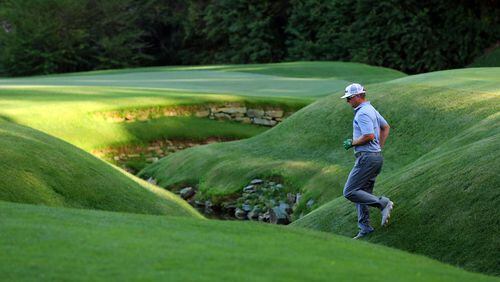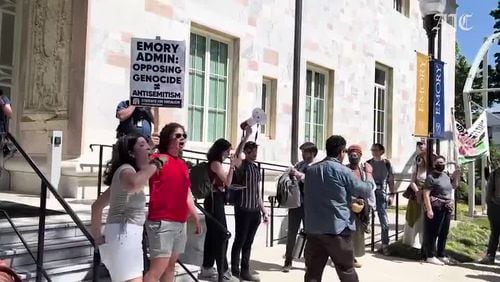This may be the final year for Masters patrons to watch one of the iconic holes in golf before it undergoes a change.
Augusta National’s No. 13, named Azalea for the 1,600 flowery shrubs that line the left side of the fairway and frame the green in pink and white, is a par 5 that may play 510 yards for the final time.
Augusta National is reportedly considering buying land behind its 12th green and 13th tee from neighbor Augusta Country Club that would enable Masters tournament officials to move back the tees on 13 by as much as 50 yards. The cost of the purchase is reportedly between $27-30 million. Chairman Billy Payne said on Wednesday that Augusta National is considering several options on 13, but declined to say what any are.
The move is being considered because of the ease with which players are dominating the hole. The scoring average in 2015 was 4.55, the easiest on the course because it gave up 20 of the tournament’s 47 eagles and 141 birdies compared to 22 bogeys and nine double bogeys. Several players hit second shots with short irons, which isn’t the point of a par 5. From 1942-2015, it is the second easiest hole on the course with a scoring average of 4.78. At its toughest in 1976, players still practically made par with a scoring average of 5.04.
Reactions to the possible change have been mixed.
Jordan Spieth, last year’s Masters winner and who birdied the hole each round, likes 13 as it is, but said the proposal would likely help his tee shot. While bombers like Dustin Johnson and Bubba Watson can do a fly-over of the azaleas and put their shots into the fairway past the dogleg, the short-to-medium hitters consistently risk hitting their tee shots through the fairway into the pinestraw that frames the bend in the right side of the fairway. It’s from that pinestraw that Phil Mickelson hit his miraculous approach from behind a tree in 2010.
“I’d actually find the fairway and it would make the longer hitters have to hit it further right,” Spieth said.
Matt Kuchar said some players won’t hit driver on 13 for fear of putting it into the pinestraw and trees. Moving the tees back will put driver back into play. At the very least, it will allow choices, which was one of the goals when the course was originally designed by Alister MacKenzie in collaboration with Bobby Jones.
The hole has been altered numerous times since the first Masters in 1934 when it debuted as No. 4 at 480 yards. One of those alterations included purchasing land from Augusta Country Club in 1970 so that privacy trees could be added and the tee box moved back five years later. More land was purchased from Augusta National’s neighbor in 2001, the tee box moved back in 2002 and the hole lengthened to its current distance of 510 yards.
“To me, whatever has happened here, a change or a push or a massage, I feel it’s always in the best interests of everybody, so it will be great,” Zach Johnson, 2007 Masters champ, said.
Jack Nicklaus, a six-time Masters champ who played No. 13 to a stroke average of 4.53 in 45 Masters, offered different solutions to increasing the challenge. They are solutions drawn from his experience as a golfer and sought-after course architect.
Instead of spending the money to move back the tee boxes, he said officials could just turn the hole from a par 5 into a par 4. With last year’s scoring average, it would be become the most difficult par 4 on the course.
If that’s not agreeable, the Golden Bear said the green could be moved back 30 yards, which he said he could easily be done. That would make for a much longer approach. Those who hit it into the pinestraw on the right would likely be forced to layup with their second shots.
Lastly, he said Augusta National could re-route the stream bed and put more trees in.
“I’m sure that from a traditionalist standpoint, the best way is probably to lengthen the hole, and then you don’t change anything else,” he said.
About the Author







